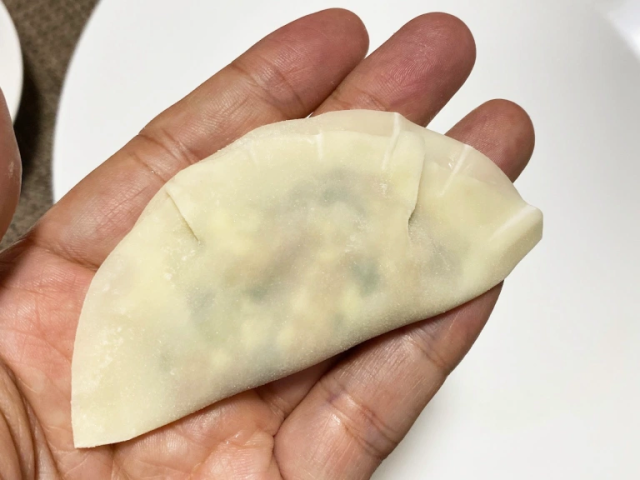
A cheap and easy way to make one of Japan’s favorite inexpensive comfort foods.
<CRUNCH> <CRUNCH> Oh, sorry, about that. We were just stuffing our faces with potato chips. We’ve been doing a lot of that these days, seeing as how we recently bought an awesome kitchen gadget for making chips at home in our microwave.
But our gastronomic desires are endless, and no sooner had we satisfied one comfort food craving than our stomachs began growling again. “Yeah, all these chips are nice and all, but what have you done for us lately?” they seemed to be asking. “Like, when was the last time you fed us some gyoza?”
Gyoza, the deep-fried dumplings also known to some people as pot stickers, are a staple of delicious inexpensive dining in Japan, where they’re offered at ramen joints, izakaya pubs, and Chinese restaurants. Packed with garlic and meat, they’re bite-sized bursts of flavor and protein, and while you can buy pre-made varieties as takeout orders to eat at home, they really taste best right out of the pan/off the grill.
Unfortunately, gyoza are a pretty big pain to make. Dicing up the ingredients isn’t too hard, and you can buy gyoza skin wrappers at the supermarket. Stuffing the skins and sealing them, though, requires a firm but delicate touch, and if you don’t do it just right the wrapper will come unraveled during cooking and spill the filling.
Luckily, we’ve found a solution to this problem, and, in keeping with our usual sensibilities, it’s one of the cheapest we could find. This One-Touch Gyoza Pack cost us just 130 yen (US$1.23), but you can find even more affordable models at 100 yen stores like Daiso.
▼ “It can be made with one touch of handling” vaguely boasts the package’s English text, but we’re here to make gyoza, not learn a language.
Once out of the package we learned that the One-Touch Gyoza Pack is sort of like a castanet in design, so of course we had to play with it for a couple minutes before getting started on any actual cooking.
The exact ingredients and ratio for gyoza fillings vary from chef to chef, but diced pork, garlic, cabbage, and leeks are pretty much always on the list of guests admitted to the party.
Once we had those prepared, all we had to do was place an empty gyoza wrapper into the One-Touch Gyoza Pack, spoon in some filling mix, and snap it closed.
So how did it turn out?
Perfect! In just seconds, the tool created crisply pleated folds, securely closed but without any sort of tearing or warping of the skin.
To further gauge the One-Touch Gyoza Pack’s effectiveness, we tried folding a gyoza by hand, and the results were far less aesthetically pleasing.
▼ Hand-folded gyoza (left) vs. One-Touch Gyoza Pack (right)
No longer seeing any point to wasting time hand-folding, we went back to using the One-Touch Gyoza Pack and in just a few minutes had more than two dozen gyoza ready for pan-frying.
So yes, the One-Touch Gyoza Pack does its job extremely well. However, it’s important to remember exactly what that job is: folding the gyoza. The actual cooking is up to you, so we had no one to blame but ourselves when we didn’t pay close enough attention and singed ours.
But at least it’ll be easy for us to fold more gyoza and try again.
Gyoza grill image: Pakutaso
All other images ©SoraNews24
● Want to hear about SoraNews24’s latest articles as soon as they’re published? Follow us on Facebook and Twitter!
[ Read in Japanese ]
Follow Casey on Twitter, where you can be sure he’s craving gyoza regardless of the day or time.
[ Read in Japanese ]

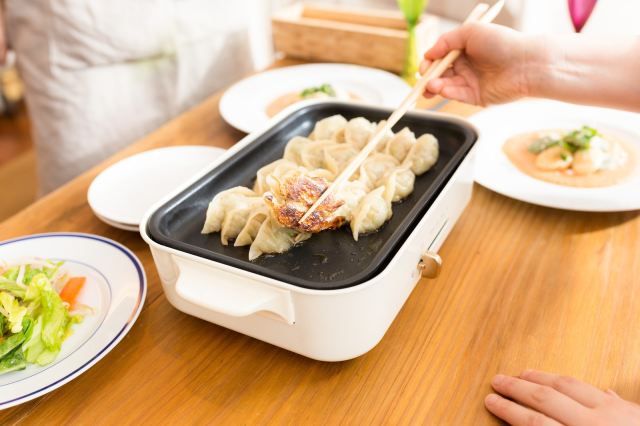
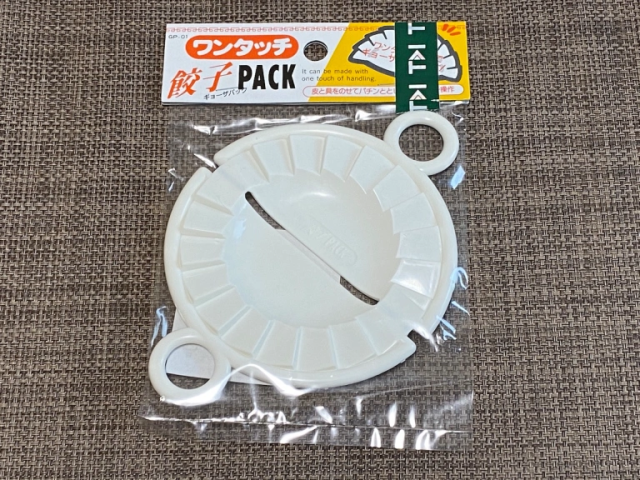
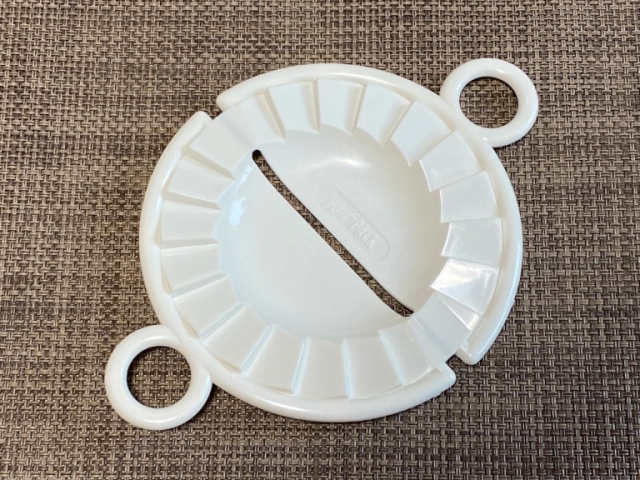
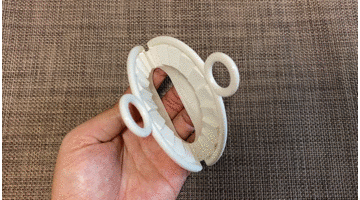
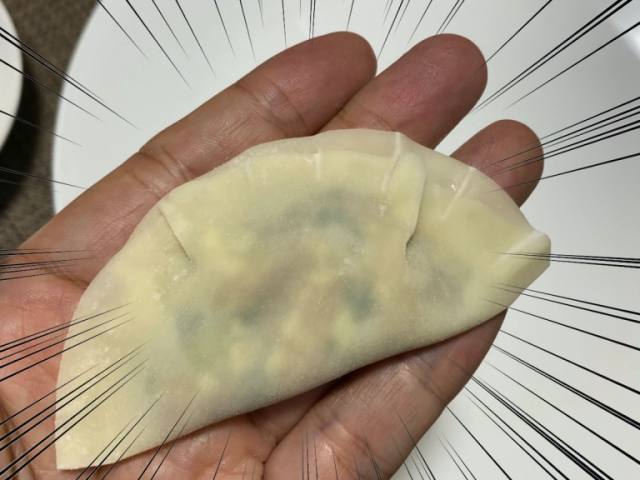
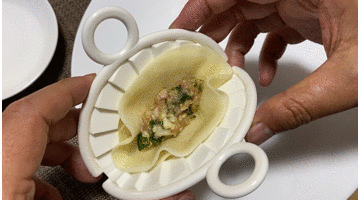
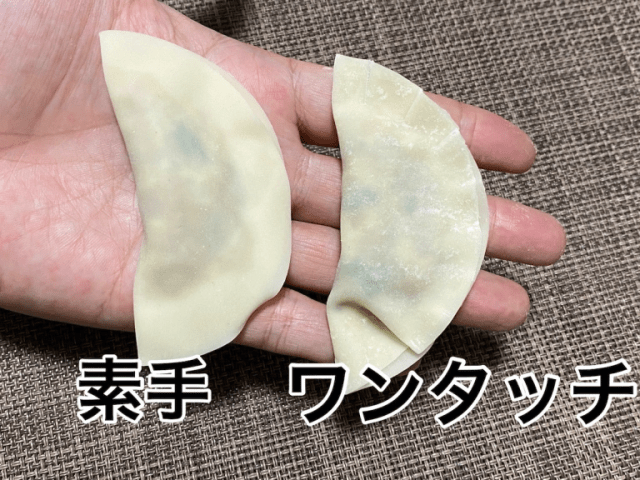
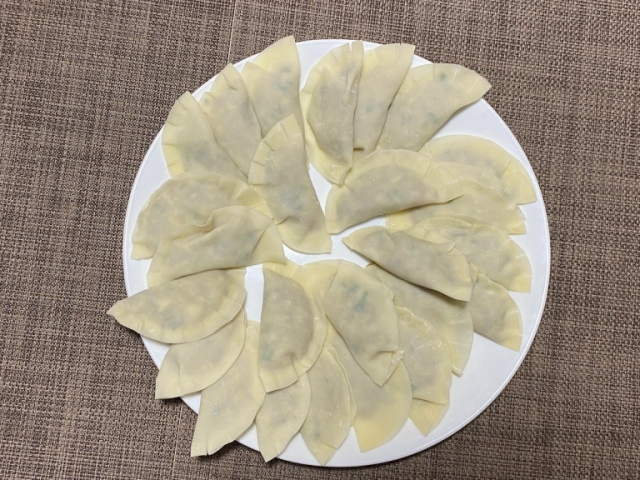
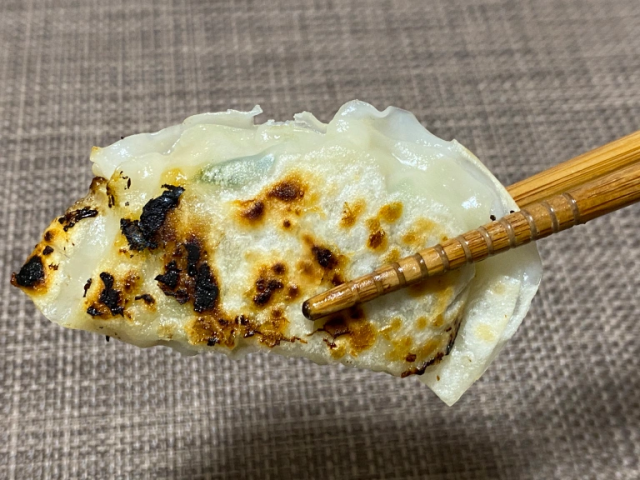
 Who made the tastiest gyoza in 2021? We decide on our favourite pot stickers
Who made the tastiest gyoza in 2021? We decide on our favourite pot stickers We tried to use our leftover gyoza wrappers to make marshmallow puffs…but it didn’t go to plan
We tried to use our leftover gyoza wrappers to make marshmallow puffs…but it didn’t go to plan Japan now has “Gyoza for Athletes”, thanks to figure skating Olympian Yuzuru Hanyu 【Taste test】
Japan now has “Gyoza for Athletes”, thanks to figure skating Olympian Yuzuru Hanyu 【Taste test】 3 unusual gyoza creations from Tochigi Prefecture, the Japanese capital of dumplings 【Taste Test】
3 unusual gyoza creations from Tochigi Prefecture, the Japanese capital of dumplings 【Taste Test】 We try Ajinomoto’s new frozen gyoza, come up with a dangerously delicious way to eat them
We try Ajinomoto’s new frozen gyoza, come up with a dangerously delicious way to eat them Foreigner’s request for help in Tokyo makes us sad for the state of society
Foreigner’s request for help in Tokyo makes us sad for the state of society Mikado Coffee is a 76-year-old coffee chain with a major celebrity connection
Mikado Coffee is a 76-year-old coffee chain with a major celebrity connection Should you add tartar sauce to Japanese curry rice? CoCo Ichi makes diners an unusual offer
Should you add tartar sauce to Japanese curry rice? CoCo Ichi makes diners an unusual offer Seaside scenery, history, and so many desserts on Yokohama’s Akai Kutsu【Japan Loop Buses】
Seaside scenery, history, and so many desserts on Yokohama’s Akai Kutsu【Japan Loop Buses】 Red light district sushi restaurant in Tokyo shows us just how wrong we were about it
Red light district sushi restaurant in Tokyo shows us just how wrong we were about it Japanese city loses residents’ personal data, which was on paper being transported on a windy day
Japanese city loses residents’ personal data, which was on paper being transported on a windy day Japan’s summertime towelket pillowcases are even better with the addition of Ghibli stars【Photos】
Japan’s summertime towelket pillowcases are even better with the addition of Ghibli stars【Photos】 All-you-can-eat doughnuts at Mister Donut: How many can we eat in 60 minutes?
All-you-can-eat doughnuts at Mister Donut: How many can we eat in 60 minutes? Stay at a Japanese capsule hotel in Tokyo for less than US$20 a night
Stay at a Japanese capsule hotel in Tokyo for less than US$20 a night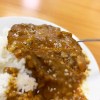 The best Japanese curry in Japan isn’t eaten at a restaurant
The best Japanese curry in Japan isn’t eaten at a restaurant McDonald’s new Happy Meals offer up cute and practical Sanrio lifestyle goods
McDonald’s new Happy Meals offer up cute and practical Sanrio lifestyle goods Japanese ramen restaurants under pressure from new yen banknotes
Japanese ramen restaurants under pressure from new yen banknotes French Fries Bread in Tokyo’s Shibuya becomes a hit on social media
French Fries Bread in Tokyo’s Shibuya becomes a hit on social media Studio Ghibli releases new action figures featuring Nausicaä of the Valley of the Wind characters
Studio Ghibli releases new action figures featuring Nausicaä of the Valley of the Wind characters New private rooms on Tokaido Shinkansen change the way we travel from Tokyo to Kyoto
New private rooms on Tokaido Shinkansen change the way we travel from Tokyo to Kyoto Tokyo Tsukiji fish market site to be redeveloped with 50,000-seat stadium, hotel, shopping center
Tokyo Tsukiji fish market site to be redeveloped with 50,000-seat stadium, hotel, shopping center Beautiful Ghibli sealing wax kits let you create accessories and elegant letter decorations【Pics】
Beautiful Ghibli sealing wax kits let you create accessories and elegant letter decorations【Pics】 Studio Ghibli releases Kiki’s Delivery Service chocolate cake pouches in Japan
Studio Ghibli releases Kiki’s Delivery Service chocolate cake pouches in Japan New definition of “Japanese whiskey” goes into effect to prevent fakes from fooling overseas buyers
New definition of “Japanese whiskey” goes into effect to prevent fakes from fooling overseas buyers Our Japanese reporter visits Costco in the U.S., finds super American and very Japanese things
Our Japanese reporter visits Costco in the U.S., finds super American and very Japanese things All-you-can-drink Starbucks and amazing views part of Tokyo’s new 170 meter-high sky lounge
All-you-can-drink Starbucks and amazing views part of Tokyo’s new 170 meter-high sky lounge More foreign tourists than ever before in history visited Japan last month
More foreign tourists than ever before in history visited Japan last month New Pokémon cakes let you eat your way through Pikachu and all the Eevee evolutions
New Pokémon cakes let you eat your way through Pikachu and all the Eevee evolutions Disney princesses get official manga makeovers for Manga Princess Cafe opening in Tokyo
Disney princesses get official manga makeovers for Manga Princess Cafe opening in Tokyo Sales of Japan’s most convenient train ticket/shopping payment cards suspended indefinitely
Sales of Japan’s most convenient train ticket/shopping payment cards suspended indefinitely Sold-out Studio Ghibli desktop humidifiers are back so Totoro can help you through the dry season
Sold-out Studio Ghibli desktop humidifiers are back so Totoro can help you through the dry season Japanese government to make first change to romanization spelling rules since the 1950s
Japanese government to make first change to romanization spelling rules since the 1950s Ghibli founders Toshio Suzuki and Hayao Miyazaki contribute to Japanese whisky Totoro label design
Ghibli founders Toshio Suzuki and Hayao Miyazaki contribute to Japanese whisky Totoro label design Doraemon found buried at sea as scene from 1993 anime becomes real life【Photos】
Doraemon found buried at sea as scene from 1993 anime becomes real life【Photos】 Tokyo’s most famous Starbucks is closed
Tokyo’s most famous Starbucks is closed One Piece characters’ nationalities revealed, but fans have mixed opinions
One Piece characters’ nationalities revealed, but fans have mixed opinions We asked a Uniqlo employee what four things we should buy and their suggestions didn’t disappoint
We asked a Uniqlo employee what four things we should buy and their suggestions didn’t disappoint Princesses, fruits, and blacksmiths: Study reveals the 30 most unusual family names in Japan
Princesses, fruits, and blacksmiths: Study reveals the 30 most unusual family names in Japan Japan’s Gyoza Filling Curry — Combination of two great foods reminds us of another great food
Japan’s Gyoza Filling Curry — Combination of two great foods reminds us of another great food Japanese snack maker develops portable gyoza you can eat anywhere, anytime
Japanese snack maker develops portable gyoza you can eat anywhere, anytime Model Nana Suzuki declared ‘The Best Gyozanist 2021’, Mr. Sato and the gang robbed
Model Nana Suzuki declared ‘The Best Gyozanist 2021’, Mr. Sato and the gang robbed Michelin Guide gyoza in Tokyo: Worthy of the accolade?
Michelin Guide gyoza in Tokyo: Worthy of the accolade? Gyoza ramen! Two of Japan’s best comfort foods in one bowl at innovative restaurant【Taste test】
Gyoza ramen! Two of Japan’s best comfort foods in one bowl at innovative restaurant【Taste test】 Croissant gyoza: Pie-like dumplings take Japan by storm
Croissant gyoza: Pie-like dumplings take Japan by storm Gyoza rice balls are here, and everyone agrees they look awesome, but are they? 【Taste Test】
Gyoza rice balls are here, and everyone agrees they look awesome, but are they? 【Taste Test】 Vending machine that serves handmade gyoza found in Yokohama!
Vending machine that serves handmade gyoza found in Yokohama! We get to be (probably) the first ever to try Nissin Cup Noodle’s latest creation: Gyoza ramen!
We get to be (probably) the first ever to try Nissin Cup Noodle’s latest creation: Gyoza ramen! Time to head north: Tochigi Prefecture’s gyoza-flavored rice topping is nothing short of divine
Time to head north: Tochigi Prefecture’s gyoza-flavored rice topping is nothing short of divine We made pan-fried and baked mini apple pies using gyoza dumpling wrappers【SoraKitchen】
We made pan-fried and baked mini apple pies using gyoza dumpling wrappers【SoraKitchen】 100-yen gyoza gadget helps you make delicious dumplings in the blink of an eye
100-yen gyoza gadget helps you make delicious dumplings in the blink of an eye We try Ajinomoto’s European Chicken Katsu Curry Style frozen gyoza that has no katsu in it
We try Ajinomoto’s European Chicken Katsu Curry Style frozen gyoza that has no katsu in it BonAppetour startup lets you cook and dine with Tokyo locals in their homes
BonAppetour startup lets you cook and dine with Tokyo locals in their homes Dumplings that’ll make you pretty! “Gyoza for girls” is the new food trend hitting Japan!
Dumplings that’ll make you pretty! “Gyoza for girls” is the new food trend hitting Japan! Easy-Bake Oven, meet your match — The Easy-Make Ramen that’s, thankfully, not just for kids!
Easy-Bake Oven, meet your match — The Easy-Make Ramen that’s, thankfully, not just for kids!
Leave a Reply